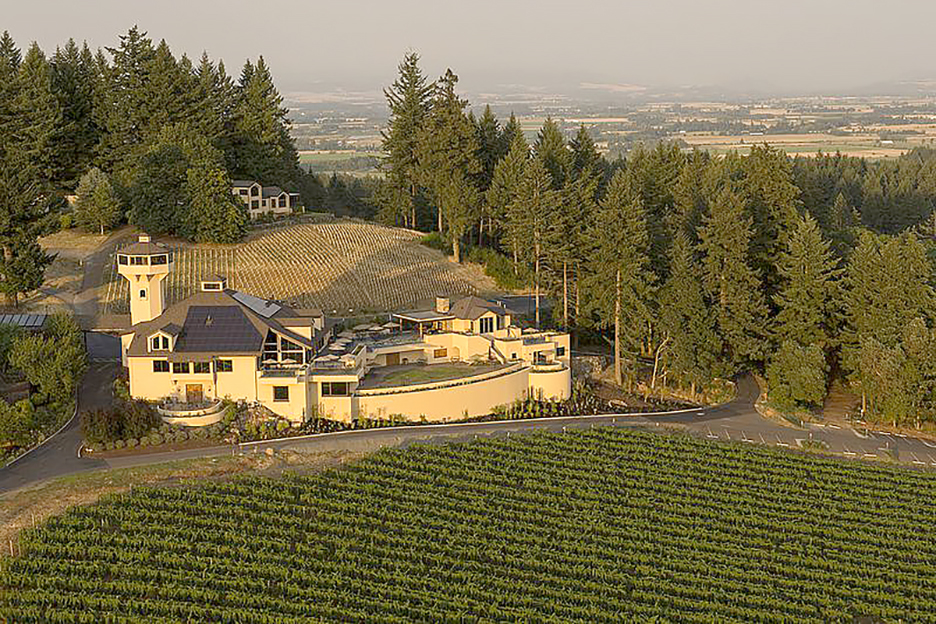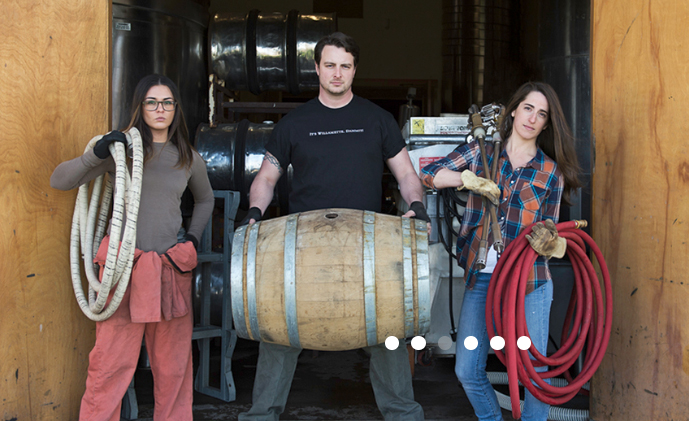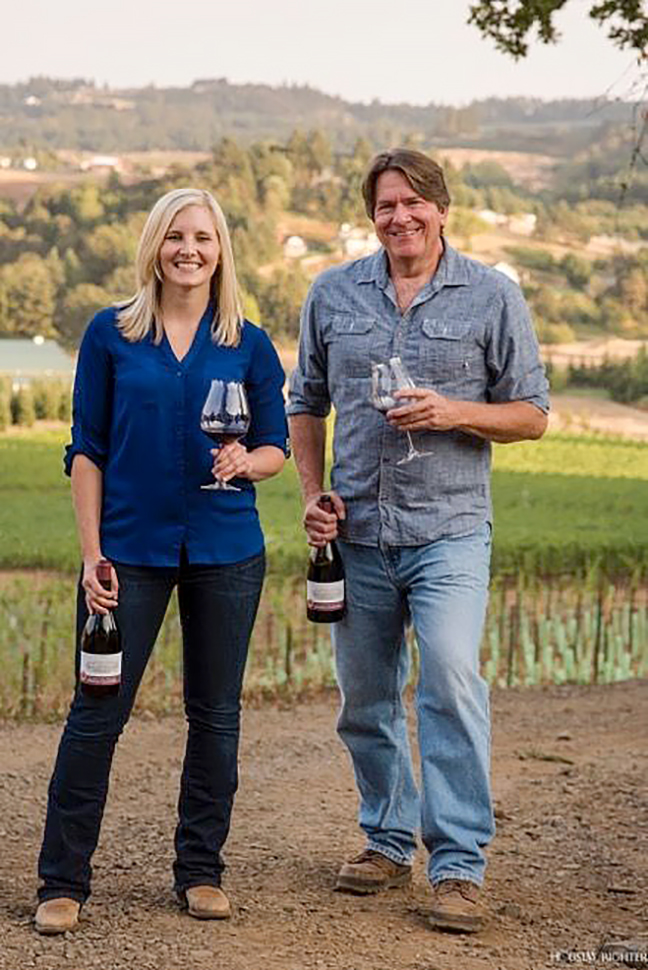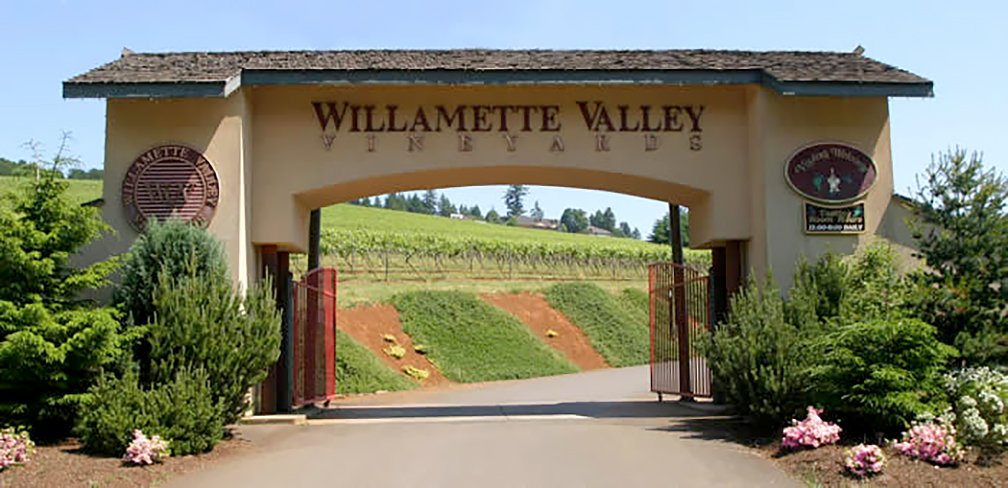Pale ruby color; cherry, blackberry, vanilla on the nose; cherry, raspberry, blackberry, vanilla on the palate.
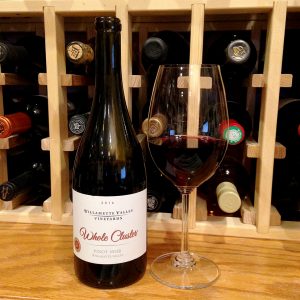
Dry; soft tannins; rounded, soft easy drinker. No oak—fermentation occurred in stainless steel tanks; malolactic fermentation allowed to achieve smoothness. Nice structure; mild acidity (3.75 pH). Whole clusters, including the stems, are placed in stainless steel tanks filled with CO2 gas to exclude excess oxygen. The result is a delicate and delicious expression of Willamette Valley pinot noir. Restrained tannin for a young whole cluster effort.
Willamette Valley Vineyards is one of the Oregon’s largest operations, but WVV is not a wine factory. They are not focus-group driven to fill a demographic niche on a supermarket shelf. WVV consistently delivers distinctive quality and value. The winery also is environmentally responsible. Since 1997, WVV has been certified sustainable through LIVE (Low Input Viticulture and Enology—the international standard for sustainable agriculture) and Salmon-Safe. In 2011, Salmon-Safe recognized winery founder Jim Bernau with the first “Hero of Salmon” award for implementation of a high-impact Salmon-Safe “Sip-Save” campaign in print, retail, web, and vehicle wraps. Delicious wines, responsible winemaking. Nice. Delicious, too.

In another initiative, WVV is a pioneer in “raptor rehabilitation” of barn owls and kestrels (North America’s smallest falcon). Washington has a steady supply of barn owl and kestrels because the birds nest in places disrupted by normal farming activities (hay stacks, for instance), and the Cascades Raptor Center and other agencies rescue hundreds of wild chicks. WVV places bird houses in trees around the vineyard to help control the mice population. Mice are a pest in vineyards because they burrow and harm root systems. Barn owls are voracious mice eaters, consuming four or five a night, even more if they are raising young. The owls primarily hunt by sound, making them super mousers even on the darkest nights or over ground covered with snow. WVV’s embrace of organic farming means there is better chance for the birds to avoid chemicals used in conventional farming.
As many of you know, I have special place in my heart for grape farmers who embrace Mother Nature instead of the chemistry lab. I think you can taste the difference in the wine, but even if you can’t, it makes you feel better drinking it. Willamette Valley Vineyards delivers on responsible agriculture and quality wine. Jim Bernau also is innovative in ownership: he believes in community-based funding. Willamette Valley Vineyards has more than 16,000 owners. The website notes: “The winery’s Common (WVVI) and Preferred (WVVIP) are traded on the NASDAQ. Owners receive invitations to exclusive winery celebrations, annual dividends, savings on wine and are a vital part of telling the Oregon wine story.” You can visit the website to discover how you can participate in the future.
Willamette Valley Vineyards Whole Cluster Pinot Noir 2016 is refined, elegant Willamette Valley pinot noir that showcases how Oregon can be in the conversation about great pinots at great price points. Smooth, superb easy drinker with laudable complexity and restraint; a praiseworthy achievement at its price. The delicate nature of this effort means it will work with very wide variety of foods from spicy barbecue and Asian cuisine to salmon and other seafood; gourmet burgers; teriyaki short ribs; sushi; baked chicken; squash soup; pork roast; stuffed eggplant with lamb and pine nuts; glazed ham; vegan enchiladas; whole wheat rigatoni with roasted vegetables. $24
Willamette Valley Vineyards website
